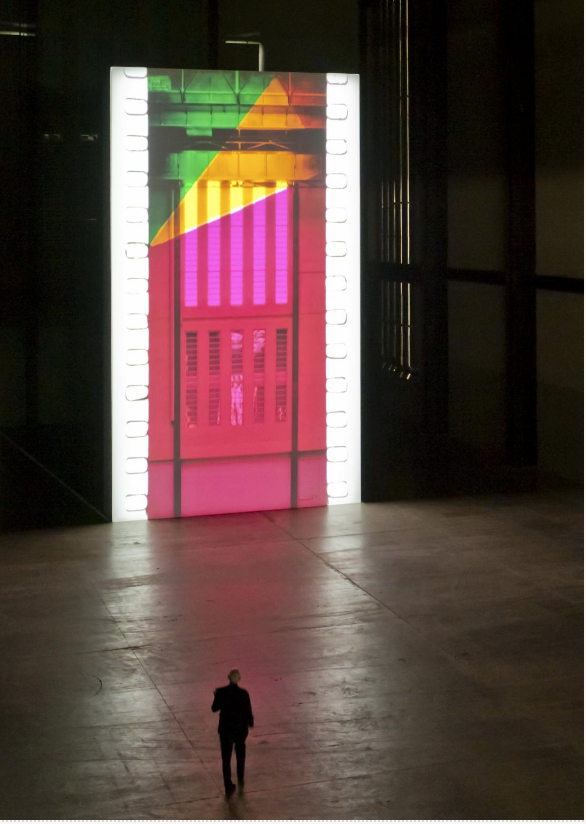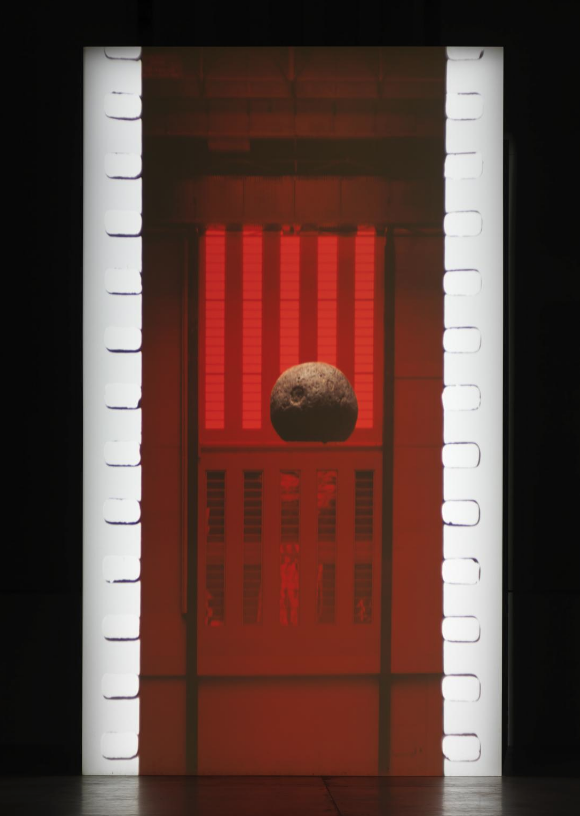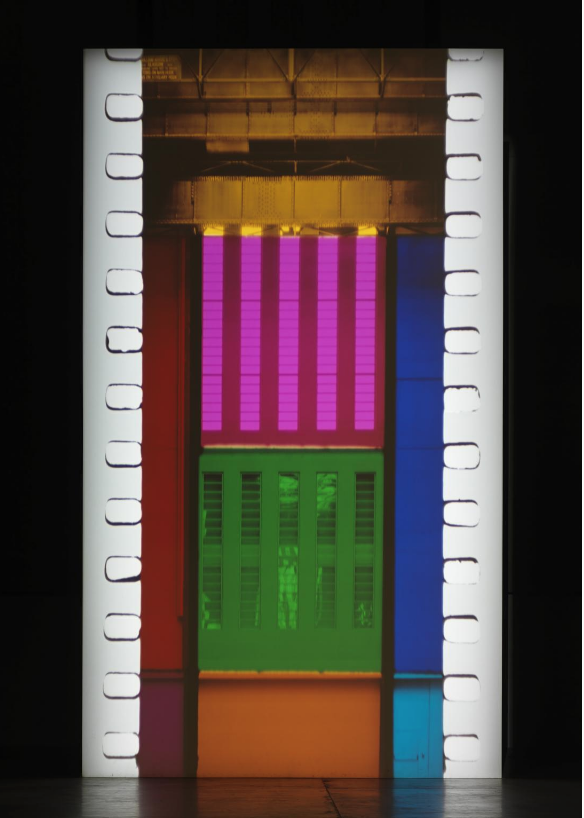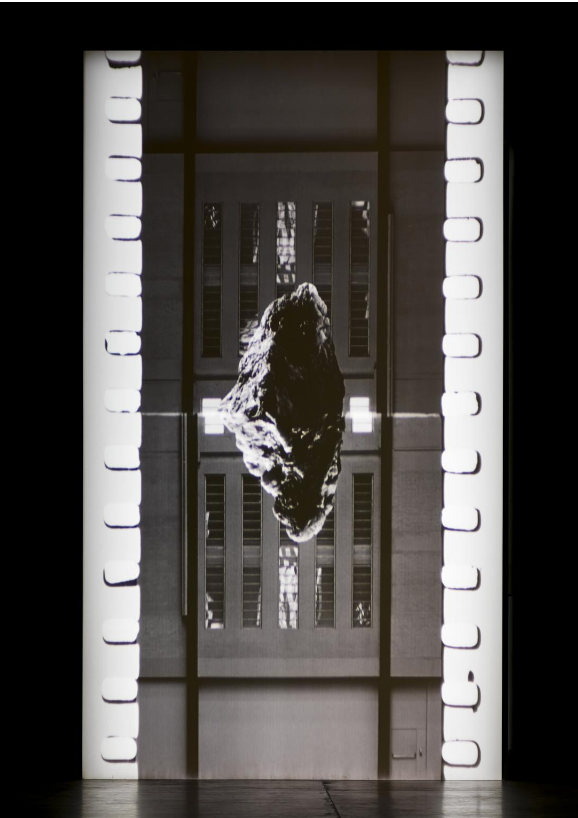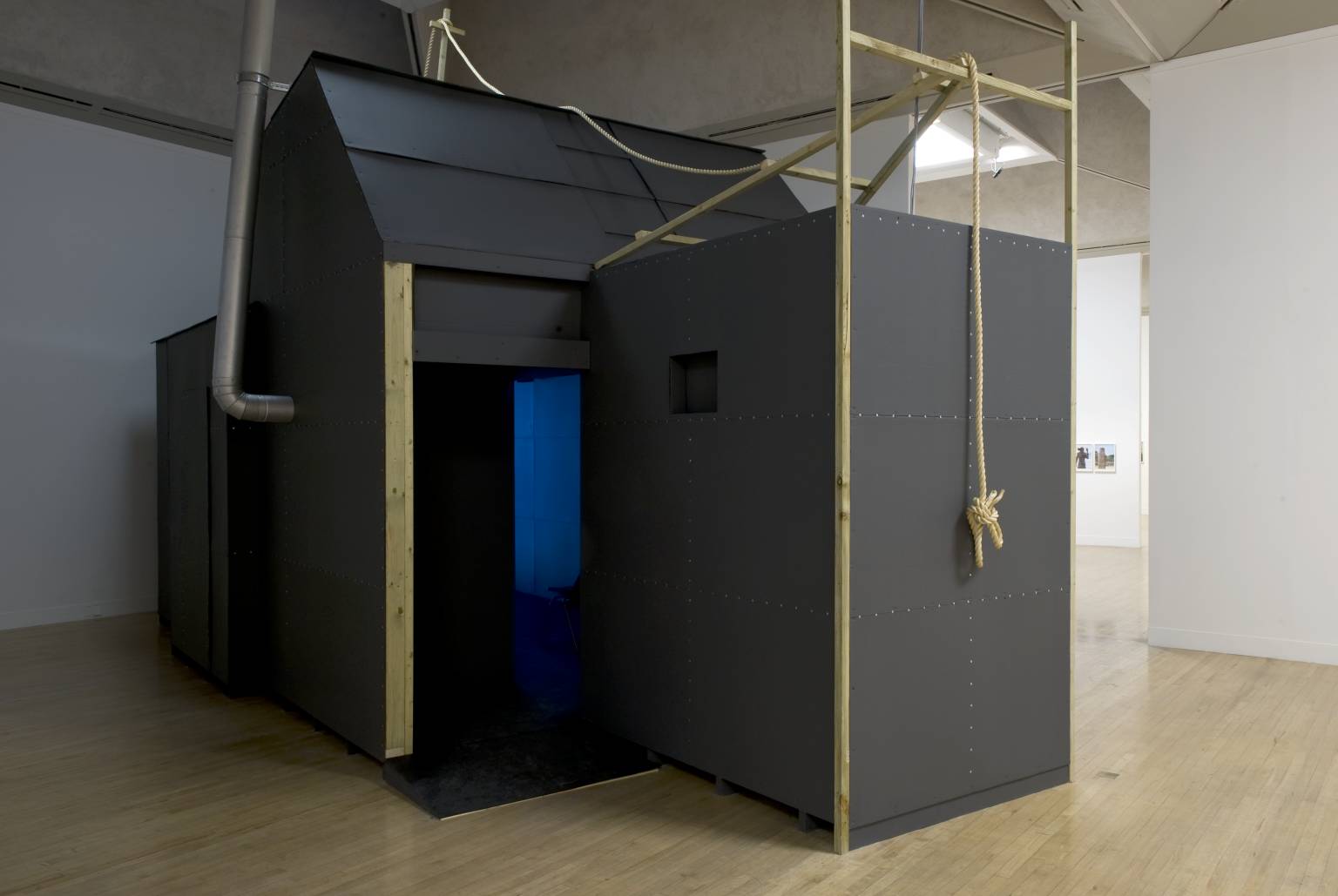The use of film and television samples that instantly evoked nostalgia, disparity and fun, helps to engage with the vietnamese diaspora of the 80s and places the viewer in a nostalgic place and a relatable time.
The films samples juxtapose the Australian and Vietnamese collective memory and reference the gaps between as a Vietnamese-Australian.
The karaoke style video format also evokes the loose narrative that karaoke videos portray - nonsensical, dreamlike and nostalgic.
The words to classic Aussie karaoke “anthems” - ‘like a version’, ‘we built this city’, and ‘working class man’ - plays with the exhibitions exploration of National Anthem theme.
The work successfully splices Australian/Vietnamese tradition and culture together in a dynamic, reactive and playful way that provokes and celebrates the dual recent history and place/ non-place of the Vietnamese-Australian in Australia.
The possibility of human interaction in this work plays a large part…
across the screens the karaoke words light up as we should sing them. the microphone lays limp and lifeless, the potential to be sung into. “to sing or not to sing” the invitation on the didactic.
The headphones, when listened to, can’t help but to create a impulsion to sing along, if not out loud then definitely in your head. The lyrics appear on the screen, the words light up as you are suppose to sing them. The anticipation and potential that the microphone/word combo of the karaoke machine evokes is palpable.
The oscillation between the fear of performing in a silent, gallery space with the temptation of singing along creates the potential of voice and action in this work. Involving the audience and placing them within the work allows the viewer to experience a cultural tradition that can potentially bring people together at a fundamental level.
Within the context of the exhibition of Australian finding one voice through many, or remembering forgotten voices,
This work celebrates and scrutinises Australia and Vietnamese cultures, the Vietnamese-Australian voice, and representation in Australia, and arrives at a playful yet scathing hybrid between them.
The video excerpts hark back to a cultural dichotomy of the 80s (or the past) and splices between the two parallel historie - when a country that was developing a voice was also ignoring / forgetting the other voices that are in the country.
It evokes nostalgia for both cultures, but also raises the question of the lost or forgotten group of Vietnamese-Australian who straddled this divide and were somewhat ignored in Australia’s National identity. This work aims to highlight this in a playful, nostaligc yet cutting way.
In the exhibition, we can still see the underlying tone through this exhibition that Australia is yet to be completely accepted as the wholly multicultural and diverse country that it is.
I am interested in the human participation, anticipation and energy potential that this work brought. I am interested in the oscillation between technology being played and technology playing the viewer and this work exemplified that.
